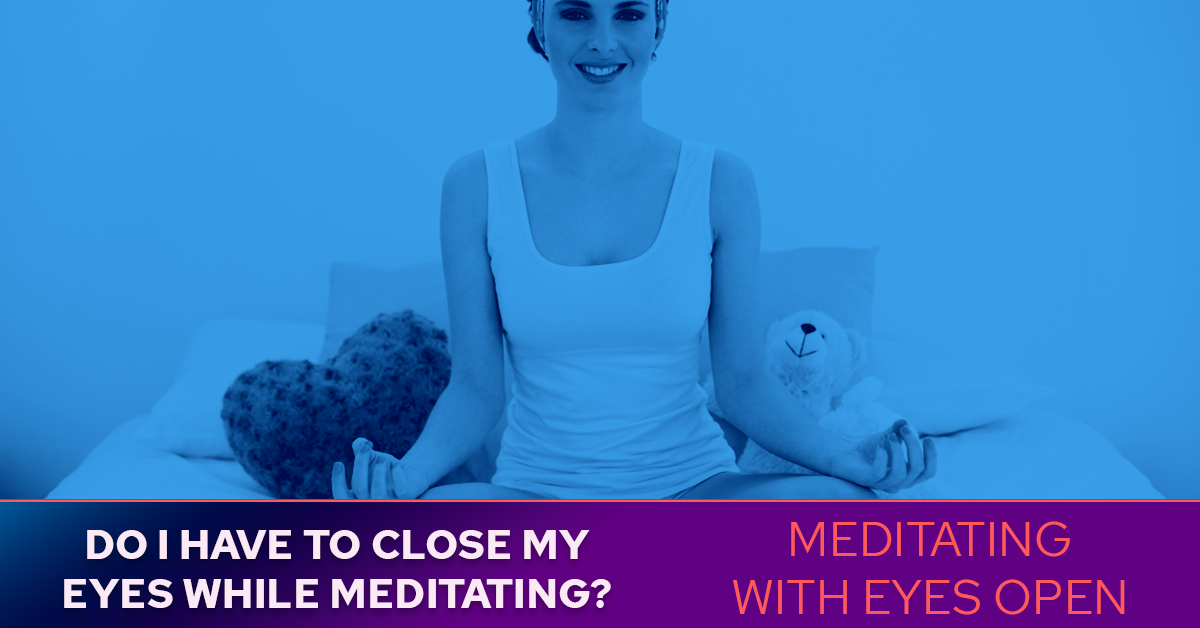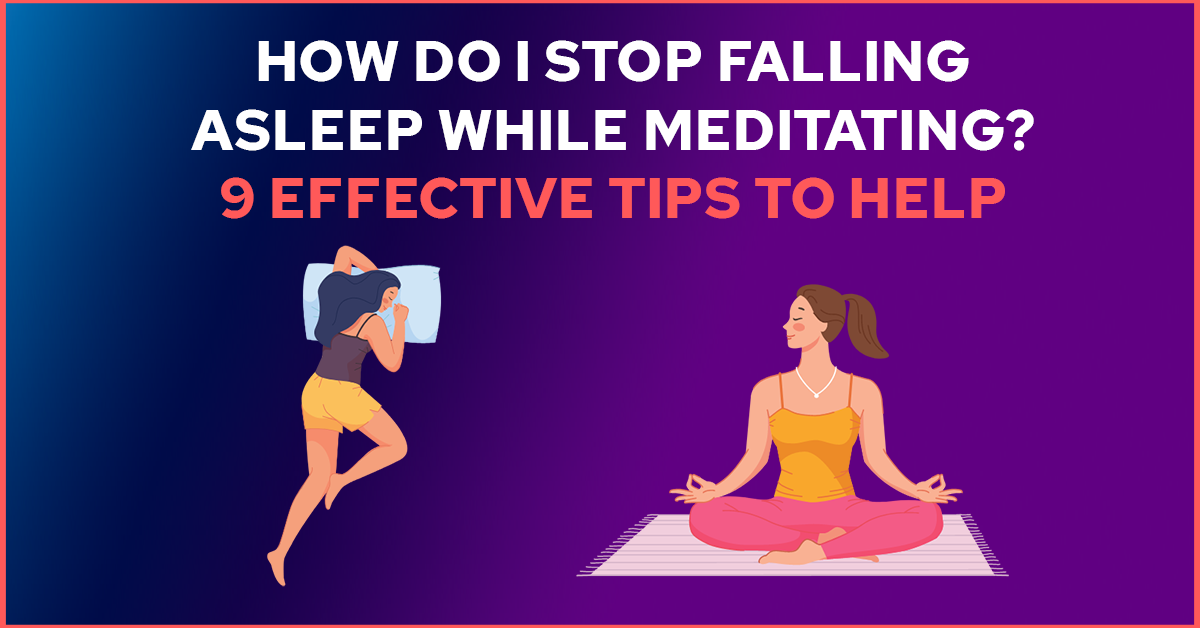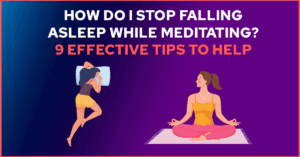Meditating With Your Eyes Open: Enhance Your Practice With Open-Eye Meditation

Struggling to stay awake during your meditation sessions? Open-eye meditation is here to help. This method lets you keep a light, easy look and connect with the world around you. Our guide will show you how this can make your focus better and blend calmly into daily life.
Ready to give it a shot?
Key Takeaways
- You don’t always need to have your eyes closed during meditation. You can meditate with your eyes open.
- Open-eye meditation helps you stay awake and more aware of your surroundings, making it easy to switch from meditating to doing everyday tasks.
- This type of meditation can improve your focus and make it easier to handle stress by teaching you to see things without quickly judging them.
- It involves looking softly at a specific point or object and letting thoughts pass by without getting caught up in them, which trains your brain in mindfulness even when busy.
- You can practice open-eye meditation anywhere, making mindfulness part of all daily activities and helping reduce stress through non-judgmental awareness.
- Both open-eye and closed-eye meditations are good; they just offer different benefits. Trying both can help you find what best improves your practice.
Understanding the Benefits of Meditating With Your Eyes Open

Meditating with your eyes wide open might sound odd, but hear me out. It’s like giving your brain a workout while still keeping an eye on the world around you – talk about killing two birds with one stone!
Improved Awareness and Concentration

Keeping your eyes open while you meditate can really boost how mindful and focused you are. It’s like you’re training your mind to pay better attention, not just during meditation but also in everyday moments.
This style of meditation helps people notice more about what’s around them and stay sharp, even when things get busy or stressful.
Trying this way of meditating makes it easier to keep that calm and clear feeling once you’re done. Instead of feeling like you’re waking up from a nap, you’ll find yourself ready to tackle whatever comes next with a steady mind.
Whether it’s work tasks or just getting through the day, having practiced with your eyes open means staying aware and concentrated without missing a beat.
Enhanced Transition to Everyday Life

Open-eye meditation makes it easy to merge your practice with daily activities. Think about it. You can meditate anywhere, anytime—while doing chores, walking in the park, or even during a quick break at work.
This way, you don’t need to find a quiet spot to close your eyes and get into the zone. By keeping your eyes open and focusing softly on what’s around you, mindfulness becomes part of everything you do.
This approach changes how you see and react to the world around you. Suddenly, things that used to bug you might not seem so big anymore. Stressful moments become easier to handle because your mind is already trained to stay calm and clear no matter what’s happening outside.
Plus, seeing kindness in others and acting compassionately becomes second nature since open-eye meditation teaches us non-judgmental awareness—seeing without immediately reacting.
Core Techniques for Successful Open-Eye Meditation and Mindfulness

Nailing down the basics of open-eye meditation can feel like learning to ride a bike all over again. You’ve got to find that sweet spot where your gaze is relaxed yet focused, and let thoughts float by like clouds—easy to say, right?
Establishing a Soft Gaze or Specific Focus Point

Getting the hang of meditating with your eyes open? It’s all about where you look. Keeping a gentle, relaxed focus is key. Here’s how to do it right:
- Find a spot that feels right for you. This could be anything from a candle to a blank wall in front of you. The goal? Keep it simple so your mind doesn’t wander.
- Relax those eyes. Seriously, don’t stare hard. Imagine your eyes are like soft clouds floating in the sky—light and easy.
- Now, let’s talk about that gaze. Think of it as looking through something, not directly at it. Your aim isn’t to analyze the details but to keep your focus broad and relaxed.
- Focus on your breath. Breathe in, breathe out—keep this rhythm going. With each breath, feel more at ease and let that soft gaze become a part of this flow.
- Thoughts popping up? That’s normal! Think of them like cars passing by. You notice them, sure, but don’t run after them or wave them down.
- If your mind starts hopping around—maybe thinking about lunch or an email—you lost track of, gently guide it back with your next breath-in.
- Remember (okay, well maybe just keep in mind), this isn’t about perfection; it’s about practice. Each time you do this, you’re training your brain to stay put and not race off every second.
- Finally, mix it up once in a while! Try focusing on different things—a plant, a piece of artwork…anything that’s calm and stationary works wonders.
Starting with these steps creates a solid foundation for meditating with those eyes part-way open! It bridges your peaceful moments on the cushion (or wherever you find cozy) with the hustle and non-stop action of daily life—making for smoother transitions from calm to chaos…and back again!
Embracing Non-Judgmental Awareness of Thoughts

After you get comfortable with letting your gaze rest easy, the next step is to watch your thoughts without judging them. This part might sound a bit tricky, but it’s about giving yourself space to think and feel whatever comes up—without getting too hung up on any one thought.
Think of it like watching cars pass by from a porch; you see them come and go, but you’re not running after them.
You’ll learn to notice thoughts as they drift into your mind, then gently let them drift away. This helps in meditating with eyes open because it trains your brain to stay calm and focused even when there’s a lot going on around you.
This skill doesn’t just help during meditation; it also makes everyday challenges easier to handle with more clarity and less stress.
Also, whether you’re a meditation beginner or you have a more advanced practice with meditation, your breath will serve as your mighty anchor to help you return to your meditative state after being exposed to a lot of distractions and the wandering mind.
Common Queries and Misconceptions about Open-Eye Meditation

Some folks think if you meditate with your eyes open, you’ll get too distracted. That’s not true. Open-eye meditation helps you stay aware of your surroundings while keeping your mind clear.
It’s about finding a balance, not blocking out the world.
Another common question is whether it’s better than closed-eyes meditation. Well, neither is “better.” They’re just different. Open-eyed mediation can make it easier to move from a peaceful state into daily activities without losing that calm feeling.
Plus, it stops you from nodding off if you’re tired! Keeping an open heart towards both methods lets you discover what works best for yourself.
Conclusion: Enhancing Your Meditation Practice with Open-Eye Techniques

Giving open-eye meditation a shot might just be the game-changer you need. It’s like taking your regular meditation and turning up the volume on awareness and connection to your space.
By keeping those eyes open, you’re not just staring into space; you’re inviting the world in, making it easier to carry that calm into the bustle of daily life.
Trust me, blending this style into your routine could open doors to a more mindful way of living that feels both fresh and deeply rooted in ancient practices like Buddhism and yoga.
Ultimately, meditation is a practice that transforms not only how we perceive our inner selves but also how we interact with and interpret the world around us, offering a refreshed perspective on life’s experiences.
Who knew? Keeping your eyes open could lead you down a path of even deeper peace and clarity.
FAQs
1. Do I have to close my eyes while meditating?
Contrary to popular belief, you don’t need to have your eyes closed to meditate. You can meditate with your eyes open. This meditative practice with the eyes open is suitable for people who prefer being aware of their surroundings or find closing their eyes during meditation challenging. Whether your eyes are open, closed, or half-open, the key is finding what works best for you in the moment.
Open-eye meditation can be an effective way to stay engaged with the outer world while exploring the inner landscape of thoughts and emotions. The myth that meditation requires a quiet room with eyes shut is a misconception.
In reality, meditation can be practiced in various environments and with different techniques, including with your eyes open. Understanding this flexibility can encourage more people to explore meditation and experience its benefits.
SELF-DEVELOPMENT Pro Tip: Meditating with your eyes open can totally change the game! It’s a practice from Buddhism that helps you stay connected to your environment. Imagine not missing out on anything happening around you because your eyes are wide awake – pretty cool, right?
2. “But isn’t it easier to get distracted with my eyes open?”
You’d think so, but here’s the twist – some folks find it easier to focus when they let their gaze fall softly on something in front of them. It’s like having a gentle anchor in the visual field that keeps distractions at bay. Give it a try; who knows you may be surprised at finding your mind wanders less with this practice of meditation.
3. “How do I even start open-eyed meditation without feeling weird?”
First off, relax those peepers! Find a spot or object to softly focus on and let your gaze soften. No need to stare down anything like you’re about to win a staring contest – just keep it chill and let your eyes hang loose.
4. “Can this help me not nod off during meditation?”
Absolutely! If you’re someone who tends to fall asleep the minute you close your eyes (no judgment!), keeping them open can be a real game-changer. Plus, it makes sneaking in some mindfulness throughout the day way easier.
5. “Is there any specific type of meditation where this works best?”
Oh yeah – Zen Buddhists have been onto this for ages with practices like Zazen and Shamatha. But really, whether it’s mindful breathing or body scan meditations, keeping those eyelids up can deepen the experience in ways closed-eye meditation doesn’t touch.
6. “What if I just don’t vibe with meditating with my eyes open?”
That’s totally fine! Meditation is all about finding what feels right for YOU – eyes open or closed – it’s all good as long as it brings you closer to that calm and peaceful state we’re all chasing after.












